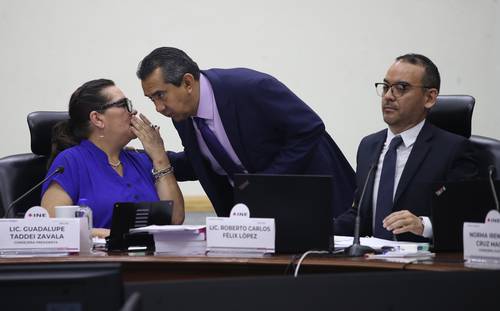Education in Colombia is part of the sectors within the National Development Plan (PND) 2022-2024, has reflected a fulfillment of the goals that does not even reach 30%.
(See: Government will not submit a statutory bill to reform the education system)
The opposite is evident in the health sector, which according to data from the National Planning Department (DNP), The objectives planned for the four-year period have already exceeded the 50% barrier.
In the specific case of education, the plan’s indicators show that the fulfillment of the goals of this area, which has been one of the flagships of this administration,reaches a management rate of 21.43%.
(Read: 79% of Colombian ‘ninis’ do not want to find a job)
In detail, for the indicator of the coverage rate in higher education, this goal to date shows 0% progress. In the case of new students at this same level, the management has also been 0% and then there is the coverage rate in secondary education which is also at 0%.
In consultation with sector experts, they assured that it is very possible that these indicators are not being measured and therefore, They do not have progress information in the DNP records.
(See: Renowned school in northern Bogotá announced its permanent closure: why?)
Education
iStock
For José Manuel Restrepo, rector of the EIA University, the results of the indicators reflect a “lack” of technical rigor in introducing the information, Considering that, in his opinion, there is currently progress in coverage for higher and middle education.
(See more: Petro demands that the new Ministry of Education achieve free education and coverage in the sector)
However, one of the problems that the academic reflects has to do with the effort spent on the reform of the Statutory Law on Education. For Restrepo, Trying to pass a bill like this took time and effort, which led to other activities around the system being set aside.
Additionally, he explained that in order to achieve compliance with these indicators, there must be joint work, which in this case has not had sufficient dialogue between the Government and the actors in higher education.
(Read: Universidad de los Andes offers 90 free virtual courses: here’s how to sign up)
“There is clearly a lack of interest on the part of the Government in private higher education institutions, in general in the private system and also in the mixed system of higher education,” he said.

Higher education.
He added that the situations with Icetex and the discussion of the reform They have been a sign of the intention to isolate the private higher education system from the goals of education coverage.
(Read More: Regulation or ban? This is how AI should work in education)
Although the objectives in higher education are weakened, in the case of basic education and early childhood, the efforts have been more positive. For example, within the indicators of the plan Progress of 83.54% is shown in the coverage of the school feeding program (PAE).
Likewise, access for girls and boys to early childhood education within the framework of comprehensive care is already at 74.89%, while in the case of public educational establishments with extended school hours, the goal has been met by 128.9%.
(See: This is how you can check the results of the Icfes tests)
According to José Manuel Restrepo, these goals set out in the PND could be met, as long as the “The Government should correct its course in the sense that it values and works together with the mixed system of higher education”.

Higher education
Oscar Berrocal / Portfolio
A health that delivers?
Although in terms of education the fulfillment of the goals set by the Government itself is not progressing more efficiently, In the case of health, the scope has been greater.
(See more: Cambio Radical went ahead and presented a health reform project: this is what it proposes)
Overall, the health sector reflects a 50.33% management in the total of the objectives illustrated within the PND, with 13 indicators. In this way, One of the greatest results has been in the complete and timely delivery of medical prescriptions, an indicator that has already reached 74.87%.
Likewise, it is assured that the construction of the Shock Plan to strengthen the early detection of breast cancer was achieved, with strategies that include the reorganization of the health services network, the strengthening of medical personnel and the guarantee of the quality of services.
(See also: With technology, this venture seeks to revolutionize the health sector)
On the other hand, as of December 2023, the Acceleration Plan for the Reduction of Maternal Mortality (Paremm) was implemented. in 19 territorial entities that concentrate 82% of maternal mortality in Colombia.

Health
iStock
They add that, for example, in the indicator of people with verified disabilities, the goal is covered by 57.44%, Likewise, the percentage of public provider offices with enabled telemedicine services has increased by 74.87%.
(Read: Scientific associations call for an update of health rates in the country)
However, goals such as the mortality rate due to malnutrition in children under 5 years of age, and adolescent women (12 to 17 years) and young people (18 to 28 years) who have access to a long-term contraceptive method, They have 0% progress, and others do not even have management progress.
For Paúl Rodríguez, economist and health expert at the University of Rosario, andThe problem with indicators is that the way in which they should be implemented has not been defined.coupled with the lack of resources to make them tangible.
(See more: Colombia must work towards more inclusive healthcare: what is missing?)
“The government has thought of different actions to try to bring to primary health care the tools that still exist without the reform and that is why they have thought of it this way, to take advantage of some decrees that existed from previous governments. The problem is the lack of money.“, he explained.

Health system in Colombia
iStock
Similarly, the feeling that time was wasted on reform and attention was lost to other system interests is also present in this sector. For Rodriguez, Political exhaustion and the fact that the reform has not been able to convince, makes it difficult to achieve the objectives of the PND.
(Read: Is it true that contraceptives affect my brain?)
“Any progress that may be made will be more directed towards territorial entities. But the general problem is the lack of money and until this issue is stabilized it will be very difficult to achieve goals that involve greater investments.” he concluded.


















